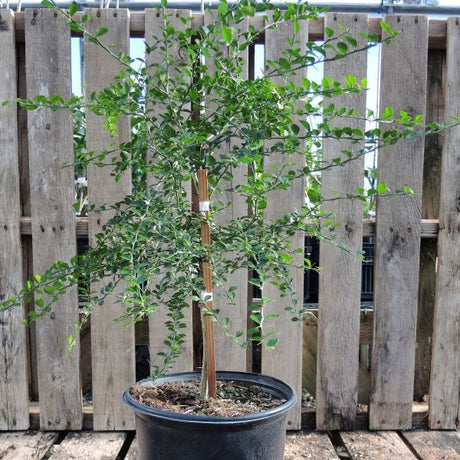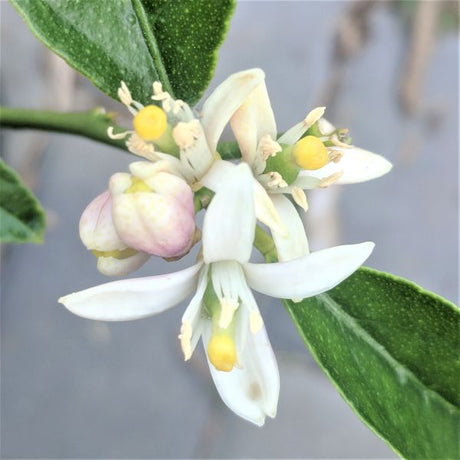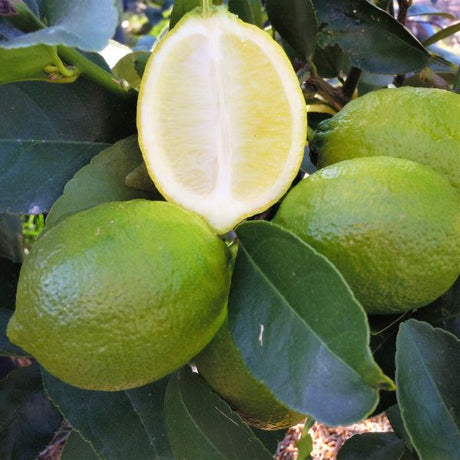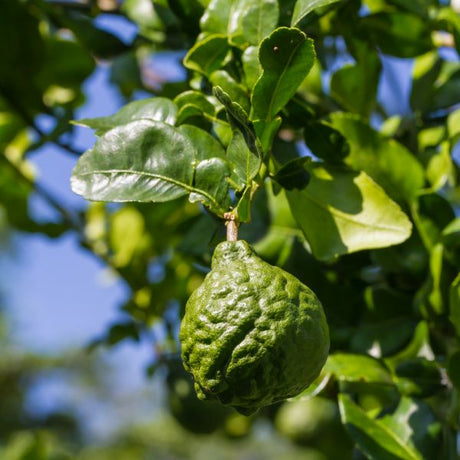-
Sold outUp to 8% off
-
Sold outUp to 15% off
-
Sold out
-
-
Sold outUp to 11% off
Citrus aurantifolia 'Mexican Thornless'
Regular price From $14981Unit price /Unavailable -
-
Sold out
Limes add a lively zest to lots of culinary treats, including drinks and desserts. Grow your own lime tree either outdoors in warmer growing zones or in pots near a sunny, southern-facing window. You’ll love the elegant look of a dwarf lime tree, and a crop of versatile fruit will sweeten your family’s diet.
Lime Tree Characteristics

Lime trees are generally small, shrub-like trees that are similar to lemon trees but with more spreading and irregular growth patterns. The lime tree is thought to be a native of Southeast Asia. It seems to have been introduced to the United States from the West Indies and Mexico, and today lime trees are cultivated throughout the tropical regions of the world. Lime fruit is smaller, contains more acid and has a thinner rind than the fruit of lemon trees. Like other citrus fruits, it contains excellent nutritional value and is one of the main dietary sources for citric acid and vitamin C.
How & Where to Plant a Lime Tree
Lime trees require full sun, and they will perform best if they receive southern sun. They require excellent drainage, as they will not tolerate standing water. Lime trees require consistent moisture, and these trees will drop their leaves if left dry too long. They are heavy feeders of fertilizer, so fertilizer applications every few months are recommended for best performance. Lime trees prefer temperatures over 50 degrees F. All lime trees grown in northern locations need to be containerized and brought inside in the colder months for successful lime production.
Lime Tree Varieties

For outdoor planting in USDA growing zones 8 to 11, consider these lime tree varieties:
- Key Limequat Tree - Cross between a kumquat and a key lime tree, uniquely flavored sweet and sour fruit with golden color, perfect for shade or ornamentation
- Australian Finger Lime - Also known as Australian Caviar Lime for uniquely shaped fruit full of caviar-like prills, may be grown as a shrub or a single- or multi-trunked tree
- Palestine Lime Tree - Yellow fruit with mild flavor, aromatic flowers, hardy and robust grower
- Giant Key Lime - Rare variety with fruit twice the size of key lime trees, arching limbs and evergreen leaves for an eye-catching garden accent
To add a lime tree as an accent in your baby’s room, kitchen or other living area, browse these container-friendly varieties:
FAQ's for Buying Lime Trees Online
What are the best lime tree varieties for home gardens?
What are the best lime tree varieties for home gardens?
Popular varieties like Bearss Lime, Kaffir Lime, and Thornless Mexican Lime trees are ideal for home gardens, offering compact growth, fragrant blooms, and abundant fruit for fresh use and cooking.
Can lime trees be grown indoors?
Can lime trees be grown indoors?
Yes, dwarf and container-friendly lime trees, such as the Bearss Lime and Key Limequat, thrive indoors when placed in a sunny, south-facing window with consistent moisture and well-draining soil.
How much sunlight does a lime tree need?
How much sunlight does a lime tree need?
Lime trees require full sun, ideally receiving at least six hours of direct sunlight daily, to support healthy foliage, fragrant blooms, and prolific fruit production.
When is the best time to plant a lime tree?
When is the best time to plant a lime tree?
The best time to plant lime trees is in early spring or early fall when temperatures are warm and stable; container-grown trees can be planted anytime the ground isn’t frozen.
How do you care for a lime tree?
How do you care for a lime tree?
Lime trees need regular watering without letting the soil stay soggy, fertilization every few months, protection from temperatures below 50°F, and occasional pruning to maintain shape and encourage healthy growth.

















